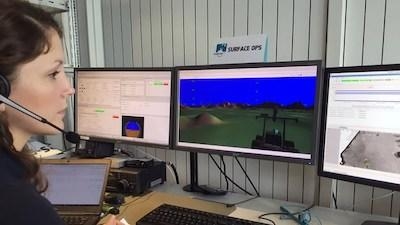First Flight By BTScientists Planned For 2020
European Space Agency operations specialists are helping flight planners at new European space startup PTScientists, headquartered in Berlin, pilot their way to the Moon. PTScientists are planning to launch lunar landers and rovers as a regular service in the future, with an inaugural flight expected in 2020.

Specialists from ESA’s European Space Operations Centre in Darmstadt, Germany, are providing consultancy on flight dynamics and flight operations as well as preparing for driving two lunar rovers.
In recent years, ESA has worked on the Multi-Purpose End-To-End Robotic Operation Network developing expertise in operating robots and in working with the specialised networks needed to remotely operate a vehicle on a moon or planetary surface from space.
Agency teams have supported live tests, including controlling a rover in Quebec, Canada, from Darmstadt, and enabling ESA astronaut Tim Peake to control a rover in the UK from the International Space Station.
This ESA experience and long-time know-how in mission operations will help PTScientists reach their lunar goals.
“We are supporting PTScientists in defining their mission operations concepts. All of the elements of which are important,” says ESA project lead Kim Nergaard, from ESOC’s Solar System and Exploration Missions Division.
“To be successful, their team needs to prepare for the end-to-end operations of the lander from launch to landing on the Moon and handle all aspects of near-real time surface operations, as well as fitting that into a bigger mission control environment.”
“Right now, we are in the early stages, mapping out what their needs will be. As it becomes clear what will be needed to achieve mission success, we aim to support them with a suite of tools to achieve that.”
ESOC control room: Flying a mission depends on the ability to test and identify technical problems in ground system hardware and software before these are put into use.
As well as drawing on a wealth of experience, the cooperation builds nicely into ESA’s long-term plans for lunar operations. “We’re happy to work with PTScientists during the definition of mission operations, and perhaps more in the future,” says Andrea Accomazzo, Head of the Solar System and Exploration Missions Division at ESA. “While we help them to develop expertise, there is also a benefit to ESA in consolidating aspects of our operations concepts, so it should really be worthwhile for both sides.”
The first mission is planned to demonstrate technology, including a mobile-phone-style 4G communications network on the Moon, as well as revisiting – at a safe distance – the last Apollo landing site.
ESA’s Estrack ground station network will help make sure that mission controllers on ground can communicate with PTScientist’s ALINA spacecraft, as they have done for recent Chinese missions to the Moon.
“We are delighted with the support we are receiving from ESA’s highly skilled experts. Together, we will perform the first privately funded European lunar landing. For PTScientists, this is the first stage of what we expect to be a long-term collaboration with ESA,” says Robert Boehme, CEO and founder of PTScientists.
Enabling European industry to make use of ESA’s expertise and infrastructure is a key aspect of the Agency’s support for the emerging ‘ecosystem’ of commercial space startups.
Earlier this year, ESA announced that it was making mission control facilities available to organisations such as universities or small companies wishing to fly their own cubesats.
ESA is Europe’s space agency, enabling its 22 Member States to achieve results that no individual nation can match. ESA combines space mission development with supporting labs, test and operational facilities plus in-house experts covering every aspect of space, all supported through the Agency’s Basic Activities.
(Image provided with ESA news release)
 ANN's Daily Aero-Linx (05.02.24)
ANN's Daily Aero-Linx (05.02.24) ANN's Daily Aero-Term (05.02.24): Touchdown Zone Lighting
ANN's Daily Aero-Term (05.02.24): Touchdown Zone Lighting Aero-News: Quote of the Day (05.02.24)
Aero-News: Quote of the Day (05.02.24) ANN FAQ: Contributing To Aero-TV
ANN FAQ: Contributing To Aero-TV NTSB Final Report: Cirrus Design Corp SR20
NTSB Final Report: Cirrus Design Corp SR20



